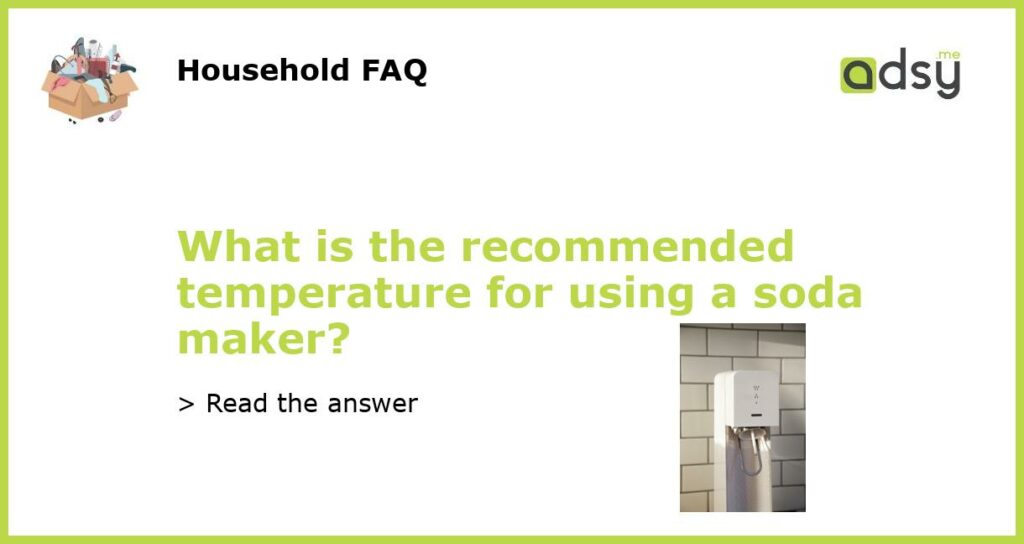Recommended Temperature for Using a Soda Maker:
When it comes to using a soda maker, temperature plays a crucial role in achieving the best results. From carbonation efficiency to flavor retention, the right temperature can make all the difference. In this article, we will explore the recommended temperature for using a soda maker and how it can impact your soda-making experience.
Why Temperature Matters:
Before we dive into the recommended temperature, let’s understand why it matters in soda making. Carbonation is a process that dissolves carbon dioxide (CO2) into a liquid, creating those delightful fizz bubbles we love. Temperature affects the solubility of CO2, meaning it determines how well the gas can dissolve into the liquid. The colder the liquid, the more CO2 it can hold, resulting in better carbonation.
The Recommended Temperature:
The ideal temperature for using a soda maker is around 40 to 45 degrees Fahrenheit (4 to 7 degrees Celsius). Keeping your water or beverage at this temperature range ensures optimal carbonation. Cold liquids can absorb more CO2, leading to a fizzier and more refreshing soda. It is worth noting that certain factors, such as the type of soda maker and the specific beverage being carbonated, can slightly affect the recommended temperature. In general, aim for the 40-45°F (4-7°C) range for best results.
Tips for Maintaining the Recommended Temperature:
Now that we know the recommended temperature range for using a soda maker, let’s explore some tips for maintaining this temperature throughout the process:
- Chill your water or beverage in the refrigerator before using it with the soda maker. This ensures that it starts off at the right temperature.
- If your soda maker has a cooling feature, use it to keep your water or beverage cold while carbonating.
- Consider using a pre-chilled soda maker bottle. These bottles are designed to keep liquids cold during carbonation.
- Avoid carbonating warm or room temperature liquids as they may not hold carbonation as well as cold liquids.
- Store your carbonated beverages in a cool place, preferably in the refrigerator, to maintain the carbonation level and freshness.
Effects of Incorrect Temperature:
Using a soda maker at the wrong temperature can have several undesirable effects on your carbonated beverages. Here are a few examples:
- If the liquid is too warm, it may not be able to hold as much CO2, resulting in weaker carbonation.
- Over-carbonation can occur if the liquid is too cold. This may lead to excessive fizziness and even cause the bottle to overflow when opened.
- Flavor retention can also be affected by incorrect temperatures. Cold liquids tend to retain flavors better, resulting in a more refreshing and enjoyable soda.
- It’s important to note that certain beverages, such as juices or syrups, may require specific temperature ranges for optimal carbonation and flavor.
In conclusion, the recommended temperature for using a soda maker is approximately 40 to 45 degrees Fahrenheit (4 to 7 degrees Celsius). Keeping your water or beverage within this range will yield the best carbonation results and ensure a refreshing soda experience. Remember to follow the tips mentioned to maintain the recommended temperature throughout the process, and be aware of the effects of incorrect temperatures on your carbonated beverages. Cheers to perfectly carbonated sodas!






